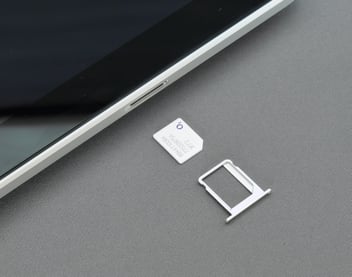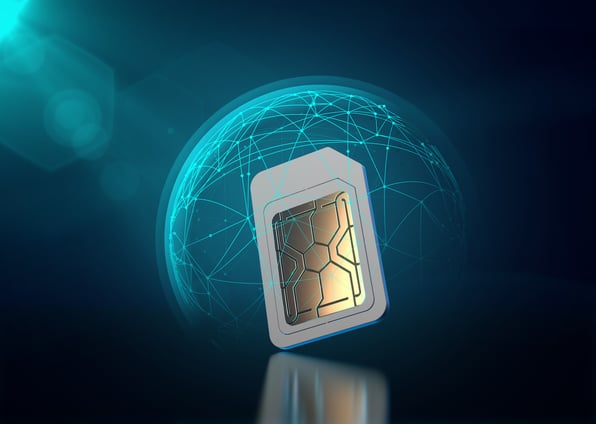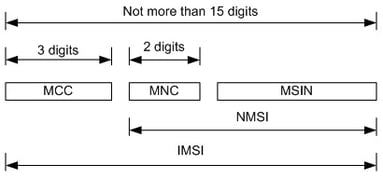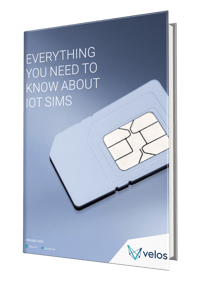

A Quick Introduction to multi-IMSI and its Functions
An increasing number of companies are foreseeing their daily operations to be integrated with IoT solutions. The need for an intelligent network solution which can offer enhanced performance, and versatility becomes imperative. Their devices must ensure seamless service availability wherever their customers require it, regardless of the geographic boundaries.
Therefore, cellular IoT providers with intentions of global deployment or mobile application development leverage the use of multi-IMSI technology.
What is an IMSI?
Multi-IMSI, short for Multiple International Mobile Subscriber Identities, is a part that contained within a SIM card. Each IMSI facilitates a device's connection to an approved number of networks. This empowers subscribers to seamlessly switch between carriers as required and access a broader range of networks.
IMSI, stands for International Mobile Subscriber Identity. It serves as a distinct identifier employed by Mobile Network Operators (MNOs) to distinguish individual subscribers. An IMSI makes up an integral part of a SIM profile.
Although each IMSI is associated with a particular MNO, they facilitate a device's connection to networks operated by multiple MNOs. The specific networks your device can access are determined by the agreements your MNO has established with other service providers.
Whenever a device connects to a network that isn't operated by the subscriber's primary MNO, this is categorised as "roaming". The subscriber may incur different rates for the services they use on the foreign networks. Your IMSI is linked to a network coverage list from your primary MNO and to any network roaming partners they have contractual agreements with.
Let’s have a look of the IMSI structure. An IMSI consists of up to 15 digits with three different parts:

1. Mobile Country Code or MCC are the first 2- 3 digits that states a subscriber’s country.
2. Mobile Network Code or MNC are the second 1- 2 digits that classifies the subscriber’s MNO.
3. Mobile Subscription Identification Number or MSIN are the last 9- 10 digits that are unique to the subscriber.
(source: raksmey education)
Getting to know multi-IMSI
A multi-IMSI SIM card is a SIM card that contains multiple IMSIs. This way, the SIM can dynamically select the appropriate IMSI for each country it operates in. The flexibility in IMSI selection can lead to improved data costs and network coverage tailored to the specific geographical location. When the SIM card travels to a new country, it automatically chooses the most suitable IMSI for optimal performance.
Process of multi-IMSI
IMSI switching involves modifying a device's IMSI to facilitate its connectivity with distinct mobile networks in varying countries or regions. To summarise it, the IMSI switching process includes the following phases:
- A device having a traditional SIM card or an eSIM, is equipped with multiple IMSIs corresponding to various mobile network operators.
- Upon activation, the SIM identifies the country code, enabling it to select an IMSI through a predefined lookup process.
- The selected IMSI is then activated by the SIM as the active one, and the network authentication process is initiated.
- If the device detect a weak or unavailable network connection, or if it needs to operate in a different region. It will disconnect from the current network and establishes a new connection with the alternate network using another IMSI.
Multi-IMSI applications in IoT
The IMSI number is vital for cellular IoT devices. Devices equipped with a single-IMSI SIM may encounter challenges when attempting to establish connections beyond their designated geographical location. Potentially necessitating the roaming agreements with regional MNOs.
Restricting a device to one carrier through a single IMSI connection can lead to dependency on that carrier's infrastructure. Consequently, you can face service disruptions and downtime for your IoT devices, adversely affecting your business model. Furthermore, in the event of rate increases by that particular carrier, you may incur higher costs without gaining any additional advantages.
For some IoT devices, like GPS trackers, asset trackers etc, it becomes essential to have multi-IMSI technology which can ensure wide network coverage and reliable data rates.
Benefits of multi-IMSI
Multi-IMSI SIM cards are more flexible and adaptable compare with conventional SIM cards. It offers numerous advantages including but not limited to the following:
1. Improved Network Coverage: Relying on a single network provider may not ensure worldwide coverage agreements with all operators, and even if they do, they might not offer the most competitive rates.
2. Local Roaming: When using a regular SIM card from your local provider, it is often locked in to their network. This restricts you from accessing other networks in your area. Multi-IMSI technology resolves this limitation.
3. Cost Effective Options: You can get access to better pricing both locally and internationally, depending on the provider you choose.
4. Achieving Compliance: Multi-IMSI SIMs can establish direct partnerships with local network operators. There is no dependency on roaming alone as by traditional SIM cards. The utilisation of local IMSIs effectively eliminates roaming limitations and ensures adherence to regional privacy and tax regulations.
5. Effortless Over-the-Air Updates for Enhanced Security: New IMSIs can be seamlessly added over the air when necessary. This hassle-free connectivity approach enables you to switch operators without the need to physically replace the SIM card.
6. Automation: The whole process of selecting the best option and switching is intelligently done by the multi-IMSI technology without any external or on-site help.
6. Optimal IoT Solutions: There are many industries where multi-IMSI provides an effective solution. For example, remote health monitoring; fleet or asset tracking, and autonomous vehicles etc.

If you are interested in learning more about IoT SIMs,
Read our comprehensive guide below.
Everything you need to know about IoT SIMs: A Quick Guide
Speak to a Velos IoT expert
Related articles


Velos IoT: Your one-stop single IoT connectivity provider
As a one-stop single-service provider of premium global wireless data, the Velos IoT solution...

9 benefits of Velos IoT-Enabled OEM IoT Solution
OEMs (Original Equipment Manufacturers) can benefit significantly from transiting into the more...
